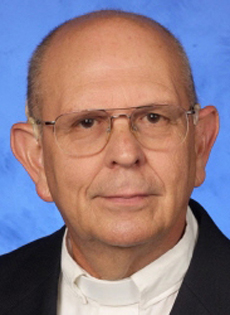
November, month of saints
Monday, November 10, 2025
*Fr. Eduardo Barrios, SJ
November is the month with the richest calendar of saints in the entire year. So much so that the month begins with a celebration of all of them, the Solemnity of All Saints. On the first day, the Church venerates all canonized saints, as well as those who have not been officially recognized as such but who led lives of heroic holiness.
Let’s take a brief look at the whole month to see the impressive number of feasts, obligatory memorials and optional memorials of saints.
On Monday, the 3rd, we honor a Peruvian saint, the glory of the Dominican family. He is a very miraculous saint who has been the subject of films and television series. He is known as "Fray Escoba," or Brother Broom, because he devoted himself to domestic tasks, although he also excelled in medicine and spiritual counseling. His name is St. Martin de Porres.
The next day, Tuesday, the 4th, we honor a saint who might not have been one, since he was made archbishop and cardinal at an early age because he was the nephew of Pope Pius IV, St. Charles Borromeo. However, he did not allow himself to be corrupted by nepotism. Rather, he demonstrated humility, evangelical poverty and tireless pastoral zeal in the enormous diocese of Milan.
The following week begins on Monday, the 10th, with the memorial of St. Leo I, who was the first pope to be given the title “the Great.” Others would follow with that title, such as St. Gregory the Great. Leo was great in doctrine, which is why he is considered a Doctor of the Church. He is the first pope whose teachings have been preserved extensively. Some of his sermons appear in the Liturgy of the Hours. He was also great as a man of government. Some films show him confronting Attila, King of the Huns, who was coming to plunder Rome.
On the following day, Tuesday, the 11th, we commemorate St. Martin of Tours. He is unique in that he was a Roman soldier who shared his cloak with a homeless man then became a Christian and a monk. After receiving a solid formation from St. Hilary of Poitiers, he was named bishop of Tours, a diocese he governed as an exemplary pastor.
The next day, Wednesday, the 12th, we honor St. Josaphat, a saint who is very relevant today because he was from Ukraine. He focused his apostolate on bringing schismatic Catholics into communion with Rome. He was so successful that his adversaries called him a "thief of souls." For this reason, he was martyred on this day in 1623.
Saturday, the 15th, brings us a magnificent Doctor of the Church, St. Albert the Great, a veritable living encyclopedia. His knowledge encompassed not only the sacred sciences, typical of a Dominican like him, but also all the natural sciences. He was a teacher of the great St. Thomas Aquinas.
On Monday, the 17th, we celebrate the memorial of one who became holy as a single woman, as a wife, as a mother, as a widow and as a consecrated laywoman in the Franciscan Third Order - St. Elizabeth of Hungary. The last years of her short life, just 24 years, were devoted to the service of the poor.
Musicians are pleased by the memorial on Saturday, the 22nd, St. Cecilia, the patroness of music. This virgin and martyr has an ancient basilica in Rome’s Trastevere district, a church much visited for the reclining statue of the saint, which holds great devotional and artistic value.
Finally, on Monday, November 24, we honor a group of 19th century Vietnamese martyrs, St. Andrew Dung-Lac and Companions - 116 fellow martyrs, including bishops, priests and laypeople. For a long time, the Vietnamese Church remained in the hands of clandestine catechists until well into the 20th century.


Comments from readers